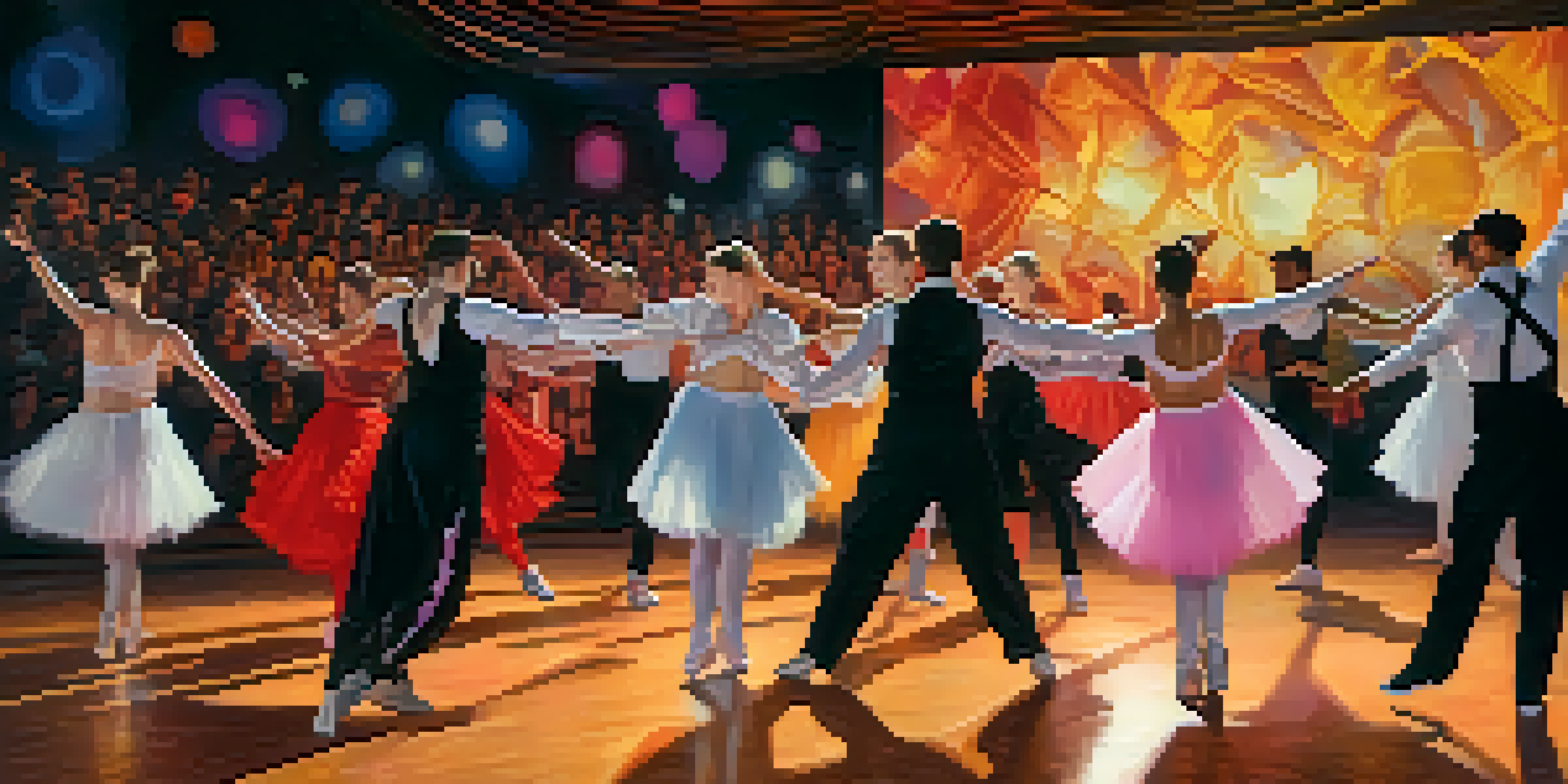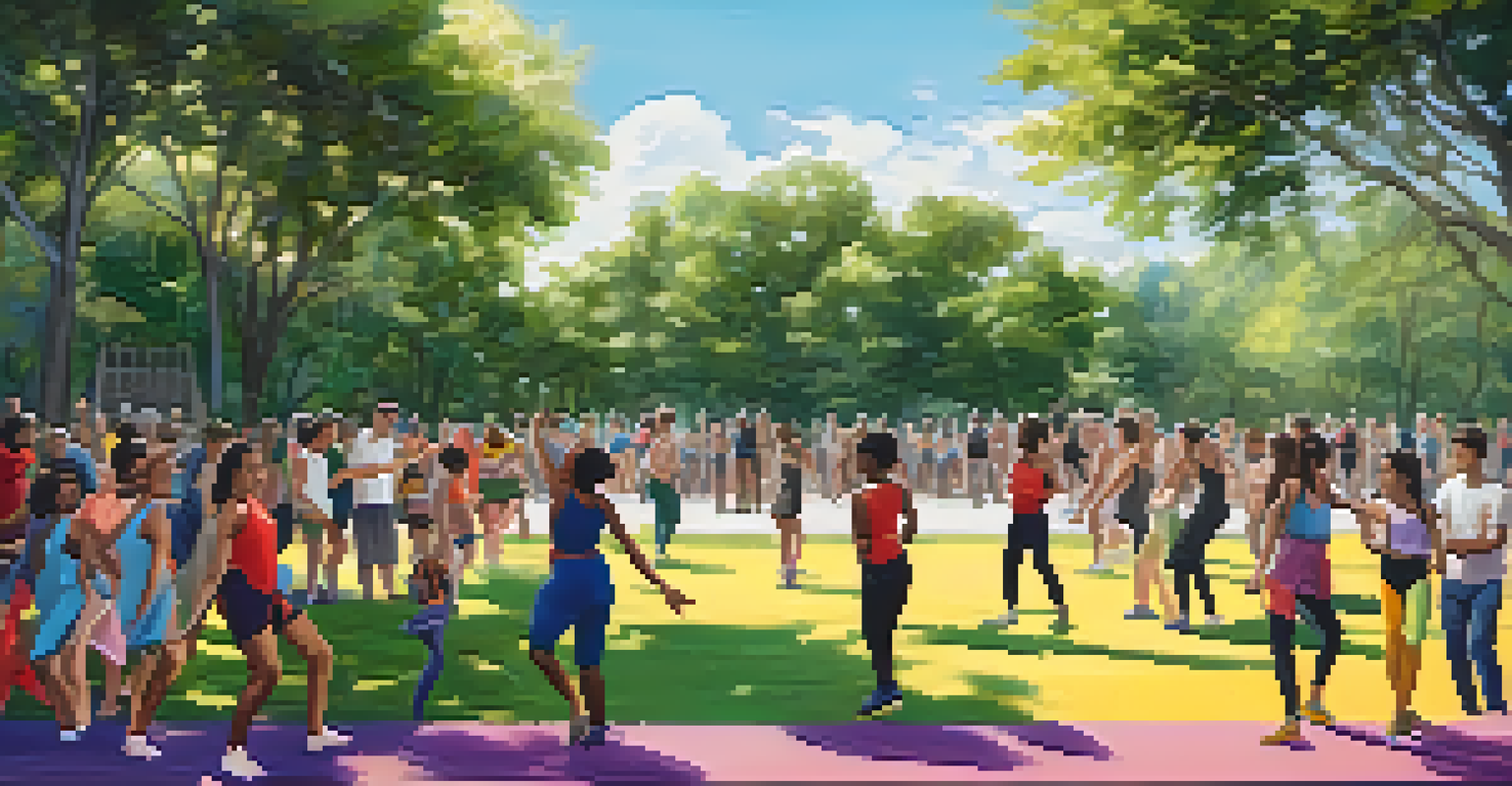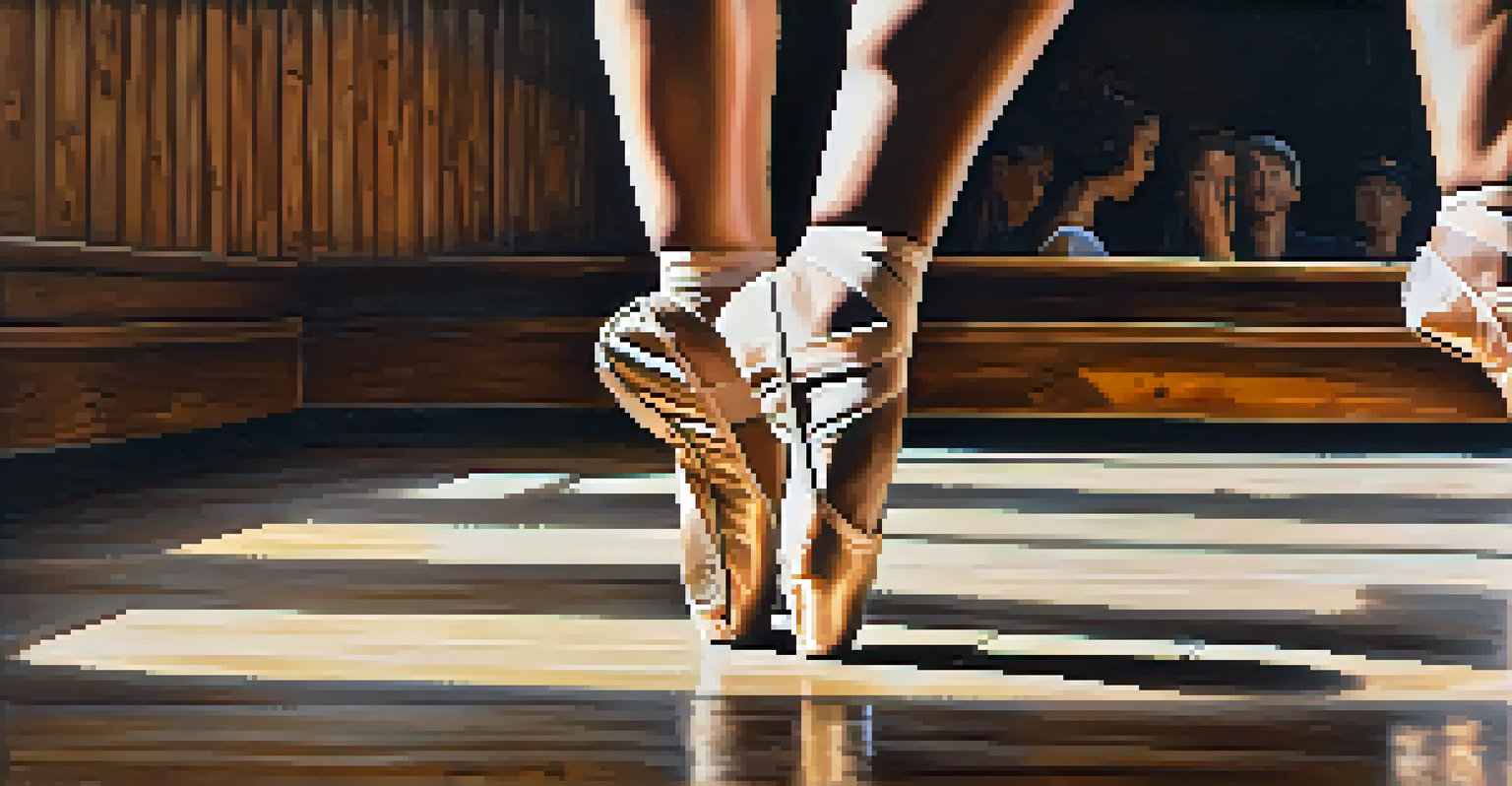The Role of Dance in Shaping Masculinity and Femininity

Understanding Gender Roles Through Dance
Dance has long been a form of expression that reflects societal norms, including those surrounding gender. Throughout history, various dance styles have highlighted what it means to be masculine or feminine, often reinforcing or challenging traditional roles. For instance, ballet is frequently seen as an art form that emphasizes grace and delicacy, qualities traditionally associated with femininity.
Dance is the hidden language of the soul.
Conversely, styles like hip-hop and breakdancing often showcase strength, power, and assertiveness, which are typically linked to masculinity. These associations can influence how dancers perceive their own identities and how they are perceived by others. In this way, dance serves not only as a performance art but also as a mirror reflecting cultural expectations.
Understanding these dynamics can help us appreciate how dance shapes our perceptions of gender. By engaging with various dance forms, individuals can explore and redefine their own notions of masculinity and femininity, breaking free from rigid stereotypes.
The Impact of Cultural Context on Dance
Cultural context plays a significant role in how dance influences gender identity. Different cultures have distinct traditions and practices, which shape the way masculinity and femininity are expressed through movement. For example, traditional dances in some indigenous cultures may celebrate both male and female traits, allowing for a more fluid interpretation of gender.

In contrast, Western cultures have often imposed stricter binaries, categorizing dance styles as either masculine or feminine. This can lead to a narrow understanding of what it means to perform gender. However, as globalization continues to blend cultures, we see a rise in hybrid dance forms that challenge these rigid classifications.
Dance Reflects Gender Norms
Dance serves as a powerful medium that mirrors and sometimes challenges societal expectations of masculinity and femininity.
By embracing diverse dance styles, individuals can engage with a broader spectrum of gender expression. This fluidity encourages dancers and audiences alike to reconsider their preconceived notions about what it means to embody masculinity or femininity.
Dance as a Tool for Gender Expression
Dance allows individuals to express their gender identity in a unique and personal way. Whether through choreography or improvisation, dancers can communicate their feelings and experiences related to masculinity and femininity. This expression can be liberating, providing a space to explore and affirm one’s identity.
The body says what words cannot.
For many, dance serves as a safe haven where traditional gender norms can be questioned and redefined. For instance, a male dancer might choose to perform a delicate ballet piece, challenging the stereotype that men should only engage in aggressive or powerful styles. Such performances can inspire others to reconsider what they believe about gender roles.
Moreover, dance communities often foster acceptance and support, encouraging individuals to express their true selves. This sense of belonging can be incredibly empowering, allowing dancers to break free from societal constraints and embrace their identities fully.
The Role of Dance in Challenging Gender Norms
Dance has the power to challenge and reshape societal norms around gender. Through innovative choreography and performances, dancers can portray diverse representations of masculinity and femininity, encouraging audiences to rethink traditional roles. This is particularly evident in contemporary dance, where artists often blend styles and break away from conventional movements.
By pushing the boundaries of what is deemed acceptable, these dancers create space for dialogue about gender identity. For example, performances that feature men in traditionally feminine roles or vice versa can disrupt stereotypes, prompting viewers to reflect on their biases. This kind of artistic expression can be transformative, both for the performers and the audience.
Cultural Context Shapes Expression
Different cultural backgrounds influence how gender identities are expressed through dance, promoting diverse interpretations of masculinity and femininity.
Furthermore, as more dancers embrace non-binary and fluid identities, the conversation around gender continues to evolve. This evolution not only influences the dance community but also has ripple effects throughout society, encouraging broader acceptance of diverse gender identities.
Dance Education and Gender Awareness
Dance education plays a crucial role in promoting gender awareness and understanding. In dance classes, students often learn about various styles and their cultural significance, which can illuminate the ways gender roles have been constructed and challenged over time. This knowledge equips dancers with the tools to engage thoughtfully with their art.
Moreover, inclusive dance programs that prioritize diversity help foster an environment where all gender identities are respected and celebrated. Educators can encourage students to explore their own identities and challenge traditional norms through their movements. By providing a supportive space, dance education can empower individuals to express themselves authentically.
As students gain confidence in their expression, they often carry these lessons beyond the dance studio. This awareness can lead to more inclusive attitudes in broader society, as dancers become advocates for gender equality and acceptance.
The Influence of Media on Dance and Gender
Media representation plays a significant role in shaping our perceptions of dance and gender. Television shows, movies, and social media platforms often highlight specific dance styles that are associated with certain gender identities. For example, competitive dance shows may emphasize traditional gender roles, showcasing female dancers in elegant attire while male dancers display strength and agility.
However, the rise of social media has also allowed for more diverse representations of dance and gender. Dancers from various backgrounds are sharing their unique styles and narratives, challenging the mainstream portrayal of masculinity and femininity. This democratization of dance media encourages a wider range of expressions and identities.
Dance Education Promotes Awareness
Inclusive dance education fosters gender awareness, empowering individuals to embrace their identities and advocate for equality beyond the studio.
As audiences engage with this varied content, they are exposed to different perspectives on gender. This exposure can foster greater acceptance and understanding, ultimately contributing to a more inclusive view of dance as a platform for exploring and redefining gender roles.
Future Directions: Dance and Gender Fluidity
The future of dance holds exciting possibilities for further exploring gender fluidity. As societal norms continue to evolve, dance is likely to reflect these changes, embracing a broader spectrum of gender identities. This shift can pave the way for new styles and forms that celebrate the complexities of gender expression.
Collaborative projects that bring together dancers of different backgrounds and identities can foster innovation and creativity. By working together, dancers can create pieces that challenge traditional narratives and highlight their unique experiences. This not only enriches the dance community but also encourages audiences to reconsider their own views on gender.

Ultimately, the intersection of dance and gender fluidity presents an opportunity for growth and understanding. As we continue to celebrate diverse expressions through movement, we can create a more inclusive and accepting world where everyone feels empowered to embrace their true selves.